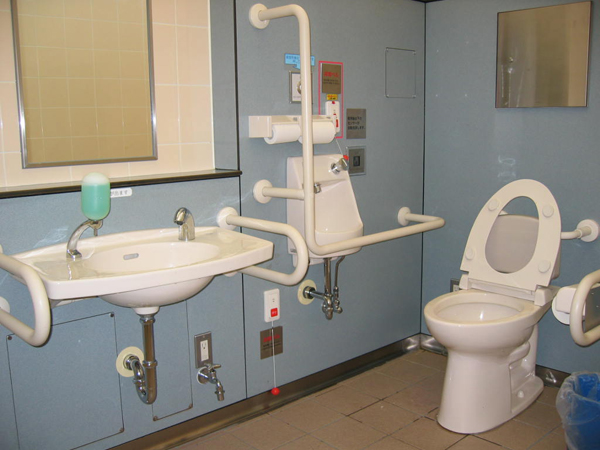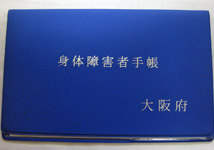
|



 |
|

|
There are plenty of clean public
toilets in Japan, including spacious and well equipped
“multipurpose toilets” that are wheelchair accessible.
They used to be for “ disabled people ”, but now they
are widely open for everybody including elderly people and parents
with baby strollers. Some
are located in the regular toilet space, but many are built
separately. You can
find toilets everywhere, so do not worry and enjoy your trip.
|
 |
 
 |
|

|
Japanese roads are narrow even
in areas with heavy traffic, so it could be dangerous.
Moreover, in urban cities, many people ride their bicycles on
the pavement ( no cycling road in Japan ), so they could hit
pedestrians. And due to the rainy weather in Japan, pavements are
built higher than the street level, and are slightly tilted like
slopes for cars crossing the pavement to get in and out of parking
lots. This makes it difficult
for wheelchair users to balance themselves when trying to go
straight. The edge of the
pavement is curve-cut to reduce the step between the pavement and
the street, but still they leave 1cm step.
This is for the visually impaired people to recognize the
border between the pavement and the street.
Yellow textured paving blocks (two types: one for guidance
and the other for warning) is very commonly installed.
But these can become barriers for wheelchair users, so there
is an ongoing discussion whether we really need to have these
blocks.
|
 |
  |
|

|
In Japan, people are
recognized as “person with disability” when he/she possesses a
disability ID certificate. Three
types of disabilities are identified: physical, intellectual, and
mental disabilities, and number of ID holders account for 6% of the
total population. With this ID,
you are entitled to various welfare services; one of them is
disability discount applied for transportation fares, admissions, etc.
Foreign disabled tourists without this ID will basically not
get discounts. And if you do,
that is thanks to the individual facilities. In the past, many
barrier-free facilities and services were open only to disabled people
carrying this ID. But now,
people have started to accept the idea that anybody with difficulty,
or who wants to enjoy the facility can do so, whether they have the ID
or not.
|
 |
  |
|

|
Electric voltage in Japan is 100V, and we used to have voltage conversion issues for chargers, but less nowadays. Please do not forget to bring your transformer.
In case you need an urgent repair during your trip, contact the welfare office (public office) in the region to introduce you to the local dealer.
Scooter type electric wheelchair users may encounter some problems in
some places because it is not so popular in Japan. Elevators, doors and
space are often narrow In Japan. Be careful.
One shop rental electric wheelchairs and scooters in Tokyo Asakusa area.
LINK
|
 |
  |
|

|
You can rent wheelchairs free
of charge in
public facilities , major railway stations, airports, shopping centers,
art museums, tourist sites, etc. In
some cities, they offer wheelchair rental service at stations and
tourist information centers.
Allowed to use it inside the facility only.
They
can even guide you around pushing your wheelchair.
This is a convenient service for elderly people or injured people
who cannot walk long distance.
It
is still very difficult to find a rental
wheelchair for travelers.
|
 |
  |
|

|
All
Japanese take off shoes in their house. That is Japanese culture. You
also need to take off shoes at some Japanese traditional inn and
restaurants. There is a place to store the shoes at entrance hall and
they offer slippers for the guests. If you want to get in on wheelchair
or with canes, ask them possible or not. They may request you to clean
up your wheelchair wheels and shoes. However, never step on tatami room
wearing the slippers, shoes and wheelchairs without any permission.
|
 |
|

Useful
Item " Pointing Conversation for Accessible Tour in Japanese
". PDF
download free.
 
|
|


![]()